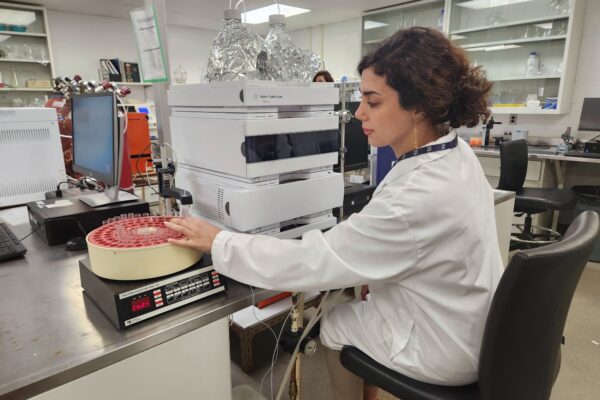- Research
-
YOU ARE
- Community member
- Future Student
- Student
- Professor
- Alumni
- Media
- Guidance counsellors
- INRS retiree
- Contact Us
- Newsroom
- Careers
- FR
-
Studies
We teach the next generation of researchers to develop scientific, social, and technological innovations.
-
Research
We find solutions through interdisciplinary research and industry or public and community partnerships.
-
INRS
We play an active role in Québec's economic, social, and cultural development.
Can the world be powered by 100% renewable energy? It is a key question for overcoming the challenges of sustainable development.
Much needs to be done to bring this about, as shown in a video produced by TED-Ed with the contribution of INRS professor Federico Rosei. Currently, only 13% of our energy needs are met by renewable sources. Professor Federico Rosei wrote the text the video is based on with his father Renzo Rosei, a retired physics professor from the University of Trieste in Italy. Produced by TED-Ed, the popularization video is entitled Can 100% renewable energy power the world? It shows through clear imagery the numerous political, scientific, and technological challenges to achieving this goal. The video has attracted considerable interest since it was uploaded. In a few days, it was viewed more than 250,000 times.
“It’s a wonderful example of scientific communication that helps people better grasp current and future energy issues,” said INRS executive director Luc-Alain Giraldeau. “Such initiatives need to be encouraged because they show in a concrete way how important research is to the future of our societies. I believe that scientists must contribute to the dialogue between researchers and society.”
Luc-Alain Giraldeau, Chief Executive Officer
While current knowledge is advanced enough to develop solar technologies further, this type of energy accounts for just 1% of the total. And yet each hour of solar radiation could theoretically meet the planet’s energy needs for a whole year. In addition to the political and technological challenges holding up solar energy, there are still a number of efficiency, transportation, and storage obstacles. The video, which is animated by TED-Ed specialists, advances superconductors as a potential solution for transporting electricity without energy loss. The trouble is that these materials operate at low temperatures and cooling them requires energy. As a result, new superconducting materials that function at ambient temperature would need to be found.
“To find new solutions, we will need a lot of creativity and innovation, as well as powerful incentives and real collaboration between countries and the public and private sectors”
Federico Rosei, holder of the UNESCO Chair on Materials and Technologies for Energy Conversion, Saving and Storage (MATECSS)
The purpose of this chair is to train highly skilled workers and transfer renewable energy knowledge to developing countries.
Achieving 100% clean, sustainable energy requires tremendous collective effort, far more than what was needed to put humans on the moon. Nevertheless, Professor Rosei is optimistic about the planet’s energy future, noting that the world’s top scientists are making promising breakthroughs to better capture, store, and transport renewable energy efficiently and affordably.
Inspired by his father’s work and vision on energy issues and the importance of outreach in science, Professor Rosei, who is very involved in new energy materials research, believes scientific communication is extremely important. This video lets him reach various audiences and raise their awareness of the renewable energy issue, which is probably our society’s greatest challenge in the 21st century.

Green energy: from innovation to transition
You may also like

January 10, 2018
Canadian Irradiation Centre (CIC)
January 10, 2018
Philippe Constant: Supporting the Development of Citizen ScienceShare

